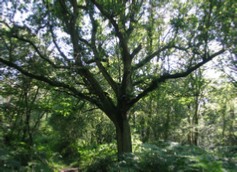

Web design © Graeme de Lande Long. Terms & Conditions.



Community Website
Scaynes Hill Village


On Wednesday 11th July a large group of villagers enjoyed a guided walk around Costells Wood with Sandy Williamson, the Woodland Trust Site Manager for the wood. 52 acres of Costells Wood was bought by the Woodland Trust in 1996 with the help of many from the village. There are also small sections of private woodland adjoining. Three different views of Costells Wood emerged for me from Sandy's wide ranging information.

Costells Wood Walk
20 August Posted by Helen Hicks
<< Back to News
The Past
Costells Wood is designated as ancient woodland which means that it has had continuous tree cover for at least 400 years. This can be seen by looking at old maps which show that the wood has been here a long time although it has reduced in size over the years. Some areas were cleared in the past but are now wooded. Clues to this come from some spreading oak trees that gained their form in the open and are now surrounded by other trees. West Sussex is one of the most wooded counties in the country which is a legacy of its past. It was the industrial heartland of the country during the 16th century when iron was smelted from deposits in the local sandstone. The power for the process came from charcoal which was produced from coppiced woodland such as Costells Wood. Coppicing

Nature Conservation
Even though Costells Wood is not that big, it has a variety of different habitats which make it important for wildlife. There are deep damp valleys, called ghylls, with alder trees, open heath with birch trees, and coppiced woodland with a canopy of large oak and ash trees, and hazel and hornbeam coppice below. Areas of coppice are important for animals like dormice, now rare, but may be living in the woods. The Bunny Walk (the area cleared along the powerlines) creates a meadow habitat favoured by bees and butterflies, foxgloves and even reptiles and orchids. One surprising plant that grows in the Costells Wood is the bilberry which is more commonly found on the moors and mountains of the north and west.

People and the Woods
Sandy talked about the current management of the Costells Wood. The management objectives are to prevent further loss of ancient woodland, to improve biodiversity and to enhance public enjoyment of the woods. These priorities mean minimal management for some areas of the wood to allow natural woodland development, and coppicing along the edge of rides which has the dual effect of making attractive paths through the woodland for visitors, but also produces a variety of different habitats for wildlife.

The woods of this area were an important part of the local economy in the past. Sandy sees woodland not just as a living landscape, important for wildlife and recreation, but also as a living and working landscape which can be used for the economic and social benefit of the local community and she is keen for local people to be involved. Examples include Butcher's Wood in Hassocks where volunteers carry out some of the woodland management. They produce woodland products such as firewood and pea sticks. Some Woodland Trust woodland is also used for Forest Schools, an initiative that takes children into woods to learn skills such as making fires and chopping wood. Through these activities they develop a range of personal and social skills and learn to value the outdoors.
For more information on the Woodland Trust, see their website where more information about Costells Wood can be found, including the management plan.
http://www.woodlandtrust.org.uk/visiting-woods/wood/4041/costells-wood/
If you are interested in helping out in Costells Wood, please contact the Woodland Trust’s Community Woodland Network at enquiries@woodlandtrust.org.uk
Many thanks to Anita Marsland for organising the walk.

involves cutting trees such as hazel at the base which stimulates multiple stems to sprout and is a way of producing wood quickly. The streams in Costells Wood were dammed with a series of pondbays provided water power for bellows. There are probably signs of these and other ancient uses in the woodland; sawpits, charcoal hearths and woodbanks (old field boundaries) could be unearthed. Anyone interested in finding out more or doing some investigation of Costells Wood should contact the South East Woodland Archaeology Forum http://www.sewaf.org.uk/ or the Wealden Iron Research Group http://www.wealdeniron.org.uk/index.htm .